GRP Respray experts please?
Discussion
Hi,
My winter project a 1987 TVR 350i is going to require a paint job next spring, I suspect it may have already had a blow over at some time in its life.
Car is in its original bright red solid colour and I've no intention of changing that,I believe it does not have a clear lacquer coat, regarding chips cracks and star crazing repairs (has a few areas) I'm more than confident in being able to repair these whether glassing the deeper ones prior to filling or just sanding back and filling the less obvious ones.
I have been offered the loan of a decent compressor and spray gun together with an air fed mask hence my intentions are to do the job myself.
So for the experts on GRP painting etc a couple of questions?
1,Which is regarded as the best flexible filler to use?
2,Do I need to use an etch primer prior to the primer coat?
3,What primer type would you recommend and how many coats?
4,What paint system would you recommend and how many coats which will allow me to flat off to a near to excellent finish before machine polishing?
I think most older TVR's I've seen and owned over the years that have had a lacquer coat applied all have areas where the lacquer has lifted off,hence I'd prefer not to have to use lacquer if I can get away with it.
In anticipation of your advice and comments I await your expert replies.
Thanks.
Rob.
My winter project a 1987 TVR 350i is going to require a paint job next spring, I suspect it may have already had a blow over at some time in its life.
Car is in its original bright red solid colour and I've no intention of changing that,I believe it does not have a clear lacquer coat, regarding chips cracks and star crazing repairs (has a few areas) I'm more than confident in being able to repair these whether glassing the deeper ones prior to filling or just sanding back and filling the less obvious ones.
I have been offered the loan of a decent compressor and spray gun together with an air fed mask hence my intentions are to do the job myself.
So for the experts on GRP painting etc a couple of questions?
1,Which is regarded as the best flexible filler to use?
2,Do I need to use an etch primer prior to the primer coat?
3,What primer type would you recommend and how many coats?
4,What paint system would you recommend and how many coats which will allow me to flat off to a near to excellent finish before machine polishing?
I think most older TVR's I've seen and owned over the years that have had a lacquer coat applied all have areas where the lacquer has lifted off,hence I'd prefer not to have to use lacquer if I can get away with it.
In anticipation of your advice and comments I await your expert replies.
Thanks.
Rob.
BritishRacinGrin said:
What prior painting experience do you have? Have you done GRP before?
Plenty of glassing experience due to having boats for years, but admit to having no experience in spraying!Hence being able to flat out any issues or imperfections due to my technique would be prefereable.
Not expecting to end up with a concourse finish but if I can achieve a good standard i'll be happy.
Rob.
This book is a good introduction to preparing and painting fibre glass
http://www.amazon.co.uk/Restore-Fibreglass-Bodywor...
http://www.amazon.co.uk/Restore-Fibreglass-Bodywor...
Colin RedGriff said:
This book is a good introduction to preparing and painting fibre glass
http://www.amazon.co.uk/Restore-Fibreglass-Bodywor...
Cheers for that Colin I may well invest, in the interim I'm keen to hear from any pro's who are experienced in this sort of work.http://www.amazon.co.uk/Restore-Fibreglass-Bodywor...
Rob.
I can't answer many of the questions but I can offer a bit of advice. My Cerbera leeched out silicones when being painted. Maybe from the mould release agent used at the factory and it was fish eye city when it dried, of course it could have been some other way it got so silicone contaminated at some point in its life, hard to say. Had to repaint it 3 times the final time it had an isolation/barrier primer layer to stop the stuff ruining the top coat finish. No amount of wiping and cleaning stopped it coming through. Didn't use any unusual fillers, the GRP is so thick that flex and cracking has not been an issue. That was 3 years ago and it is still perfect now. Used a standard 2 pack paint.
Hi,
It's all about preparation as I'm sure you are more than aware. If you can prep the car yourself to a high enough standard then you will save a whole heap cash. My Lotus Elan S4 will need a total respray soon and I will do the prep myself.
In terms of cost for someone to prep and do a stunning paint job you're looking at around £8-£10K for an Elan so add a bit for a 350i as it's got more body. The other thing is the amount of time you could be without your car, I've heard some body shops taking up to a year. It's like most things in life you generally get what you pay for, get a few quotes, look at the standard of work.
Some names spring to mind, SMS in Spalding, Option1 in Bromsgrove. Perhaps you could even ask some professional restoration shops or marque experts who they use (David Gerald TVR specialist).
This is quite a common subject on the Lotus.net forum have a search on there for info, there are much more knowledgeable people than I.
Good luck, I had a 350i many years ago, they are great cars, in fact I wish I still had it.
Regards
David
It's all about preparation as I'm sure you are more than aware. If you can prep the car yourself to a high enough standard then you will save a whole heap cash. My Lotus Elan S4 will need a total respray soon and I will do the prep myself.
In terms of cost for someone to prep and do a stunning paint job you're looking at around £8-£10K for an Elan so add a bit for a 350i as it's got more body. The other thing is the amount of time you could be without your car, I've heard some body shops taking up to a year. It's like most things in life you generally get what you pay for, get a few quotes, look at the standard of work.
Some names spring to mind, SMS in Spalding, Option1 in Bromsgrove. Perhaps you could even ask some professional restoration shops or marque experts who they use (David Gerald TVR specialist).
This is quite a common subject on the Lotus.net forum have a search on there for info, there are much more knowledgeable people than I.
Good luck, I had a 350i many years ago, they are great cars, in fact I wish I still had it.
Regards
David
On my Alpine A110 the budget had run out so I sprayed myself. I used a De Bier product, with a plasticiser to allow for any body flex. While it needed quite a bit of buffing back due to orange peel, my lack of expertise, it turned it fairly well. Not concours, but I despise concours with a passion. If I had waited to pay a professional it would have been shed bound for a couple of years at least, while I saved for the job, instead all that time was spent using it.
I would recommend you go speak to your local paint supplier shop... they will have supplied plenty of paint to all sorts of people and be able to give you specific product advice on additives to make it flexible.
Im an avid DIY person and a complete amateur at painting, but Ive done it on my noble (entire body), Ultima etc etc... with solid colours you can get away with issues such as runs as you can sand them to a perfect finish if you put the hours in.
One thing that WILL be hard, is setting the gun up... thats were the experience is as it can vary per type of paint etc... practice on some larger scrap (sheet of alloy or steel etc).
Saying all that dust and dirt are going to be your biggest enemy, without a spray booth its very hard to not get particles in your finish.
Take lots of pics and post a little thread on here so we can see how it goes and give others the push to also give it a go
Im an avid DIY person and a complete amateur at painting, but Ive done it on my noble (entire body), Ultima etc etc... with solid colours you can get away with issues such as runs as you can sand them to a perfect finish if you put the hours in.
One thing that WILL be hard, is setting the gun up... thats were the experience is as it can vary per type of paint etc... practice on some larger scrap (sheet of alloy or steel etc).
Saying all that dust and dirt are going to be your biggest enemy, without a spray booth its very hard to not get particles in your finish.
Take lots of pics and post a little thread on here so we can see how it goes and give others the push to also give it a go

I will offer some general advice....
Buy your materials all from the same manufacturer to ensure compatibility. I have seen some disasters from using incompatible material, and its time consuming and costly to rectify.
you say doing it in the spring... unless you are using an oven to bake it, moisture and trapped solvents are your enemy. Putting the car out in the sun is as good as an oven! it makes any shrinkage happen before the top coats go on.
I have always been a cellulose man... but not any longer... Its been many years since I have done any painting but I recently had the need to do some when a kid ran into the side of my MX5 and wrote it off. I used 2 pack undercoat/primer followed by 2 pack clear over base coat. It was soooo easy to use, the 2 pack is thinners are far less aggressive that cellulose and I didn't get any mapping around the repairs. the undercoat flats so well. I was also surprised how little basecoat I needed to get good coverage, and the gloss levels of the 2 pack clear straight from the gun.
Yes, I did get some dust imperfections in the clear coat... but I was able to flat these out with some 2000 wet and dry, and then polish it up to a fantastic shine. all this was achieved in a domestic garage, although I did install the twin rad fans off a Range Rover into the garage which sucked air from outside and blew it out from under the bottom of the garage door which I propped 6 inches open. It worked VERY well and kept the garage clear of overspray. a few pictures...
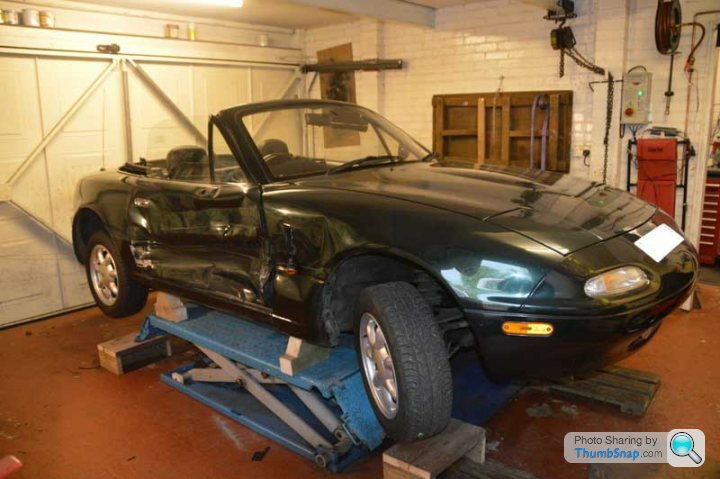
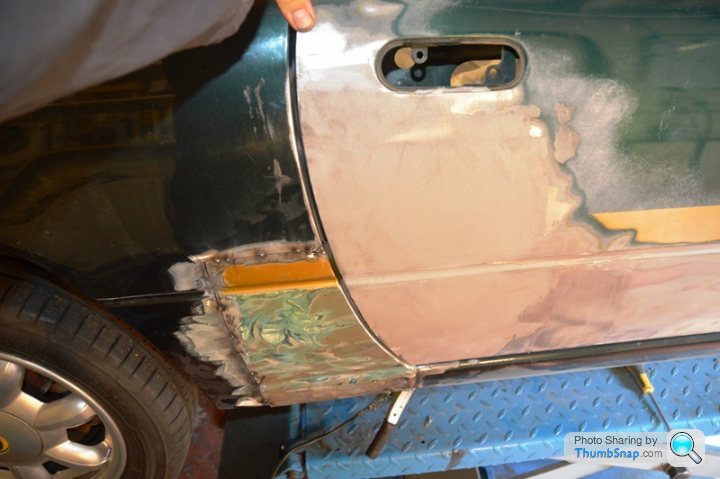

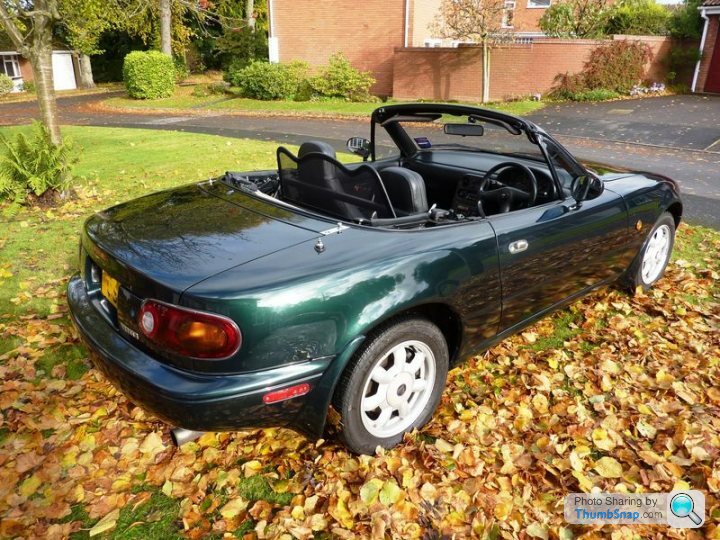
Buy your materials all from the same manufacturer to ensure compatibility. I have seen some disasters from using incompatible material, and its time consuming and costly to rectify.
you say doing it in the spring... unless you are using an oven to bake it, moisture and trapped solvents are your enemy. Putting the car out in the sun is as good as an oven! it makes any shrinkage happen before the top coats go on.
I have always been a cellulose man... but not any longer... Its been many years since I have done any painting but I recently had the need to do some when a kid ran into the side of my MX5 and wrote it off. I used 2 pack undercoat/primer followed by 2 pack clear over base coat. It was soooo easy to use, the 2 pack is thinners are far less aggressive that cellulose and I didn't get any mapping around the repairs. the undercoat flats so well. I was also surprised how little basecoat I needed to get good coverage, and the gloss levels of the 2 pack clear straight from the gun.
Yes, I did get some dust imperfections in the clear coat... but I was able to flat these out with some 2000 wet and dry, and then polish it up to a fantastic shine. all this was achieved in a domestic garage, although I did install the twin rad fans off a Range Rover into the garage which sucked air from outside and blew it out from under the bottom of the garage door which I propped 6 inches open. It worked VERY well and kept the garage clear of overspray. a few pictures...




I re sprayed an S2 a few years ago. I had dabbled with spraying panels/bonnets ect in the past. I had also done bike fairing panels, but never a full car until this one. I went from white to metallic blue.
I used normal body filler for most blemishes but also had to grind out a couple of big star cracks in the GRP, so I used resin to fill these.
I used high build primer as the 1st coat, then the blue metallic base coat, then the lacquer. It was 2k paint.
If I remember correctly, I put 4 base coats and 4-5 lacquer coats on it. The results were astounding.
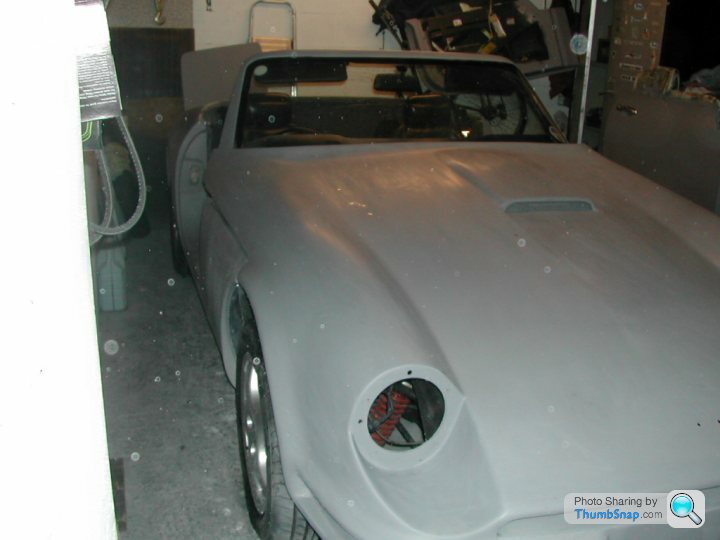


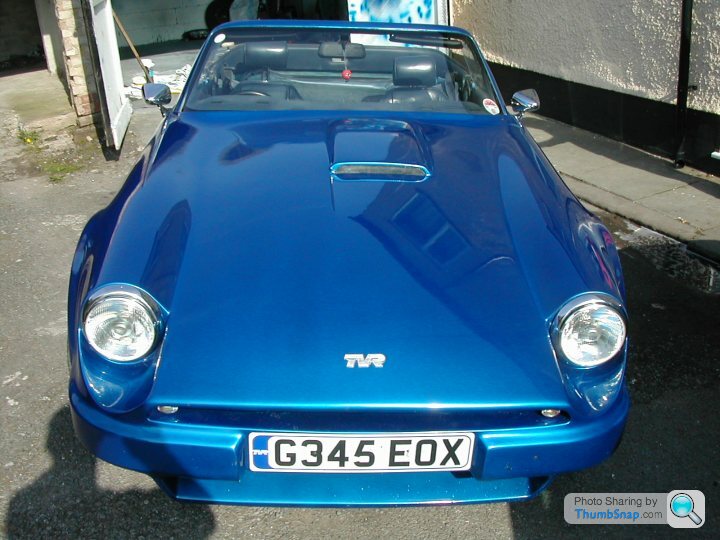
take your time and it will work out if you've done it before. Far from what some would have you believe, it's not rocket science or magic.
Forgot to mention that once the original colour was flattened, I sprayed a coat of isolater paint before using primer. This was to stop any possible reaction with different types of paint
I used normal body filler for most blemishes but also had to grind out a couple of big star cracks in the GRP, so I used resin to fill these.
I used high build primer as the 1st coat, then the blue metallic base coat, then the lacquer. It was 2k paint.
If I remember correctly, I put 4 base coats and 4-5 lacquer coats on it. The results were astounding.




take your time and it will work out if you've done it before. Far from what some would have you believe, it's not rocket science or magic.
Forgot to mention that once the original colour was flattened, I sprayed a coat of isolater paint before using primer. This was to stop any possible reaction with different types of paint
Gassing Station | Bodywork & Detailing | Top of Page | What's New | My Stuff



